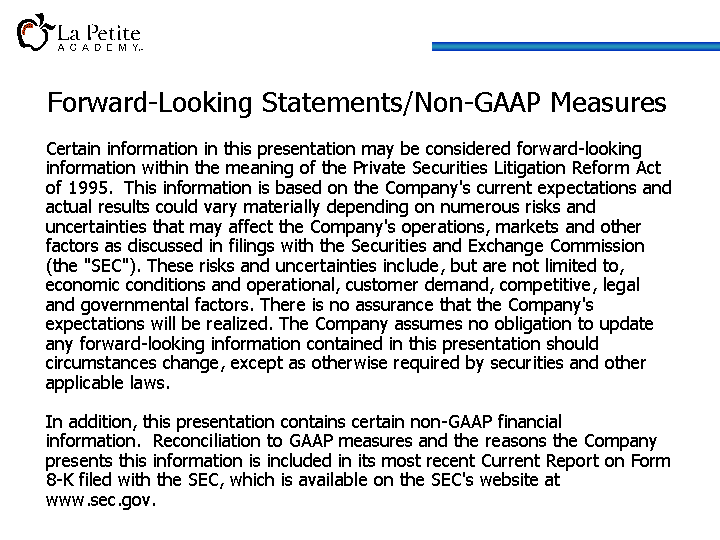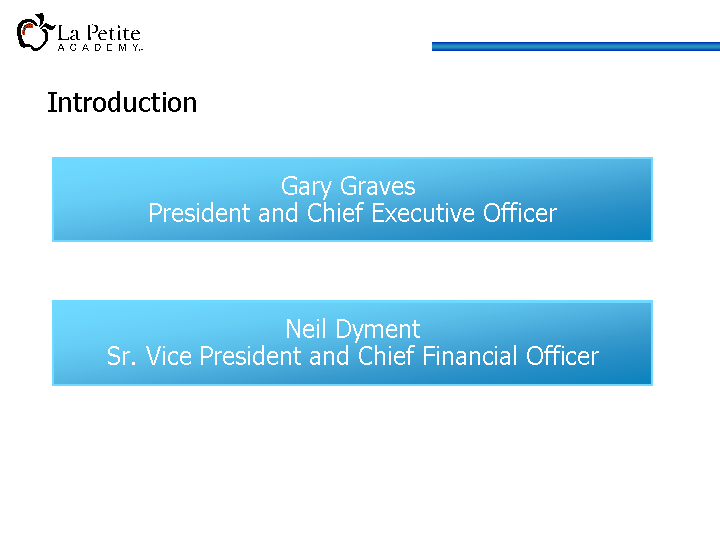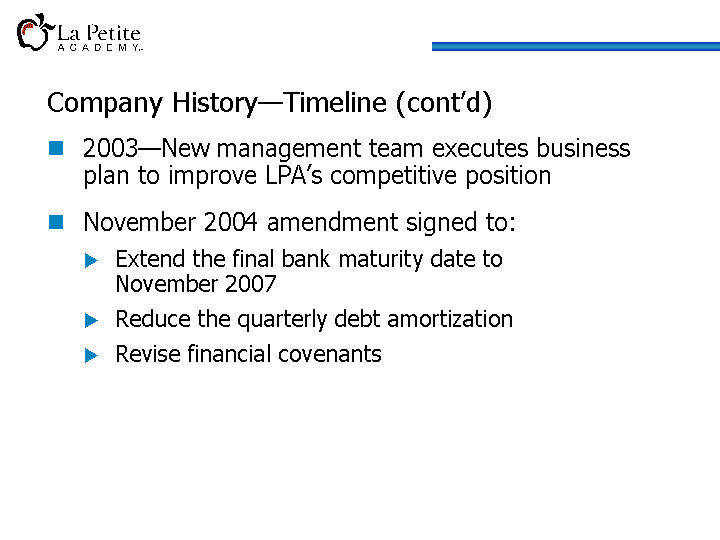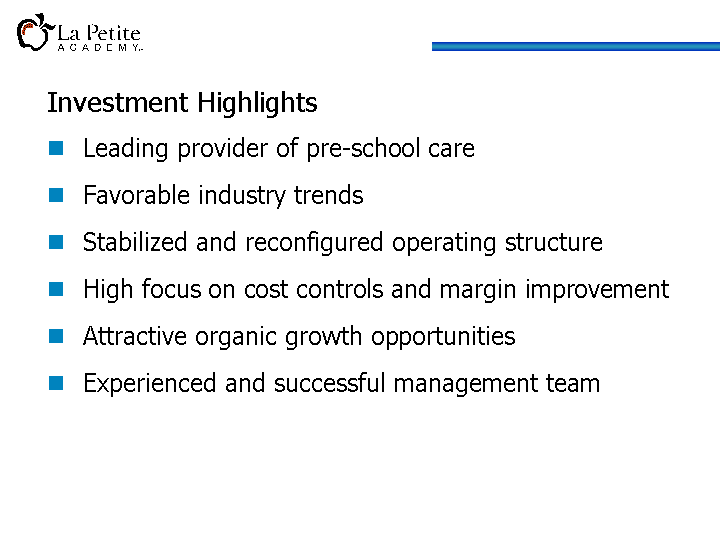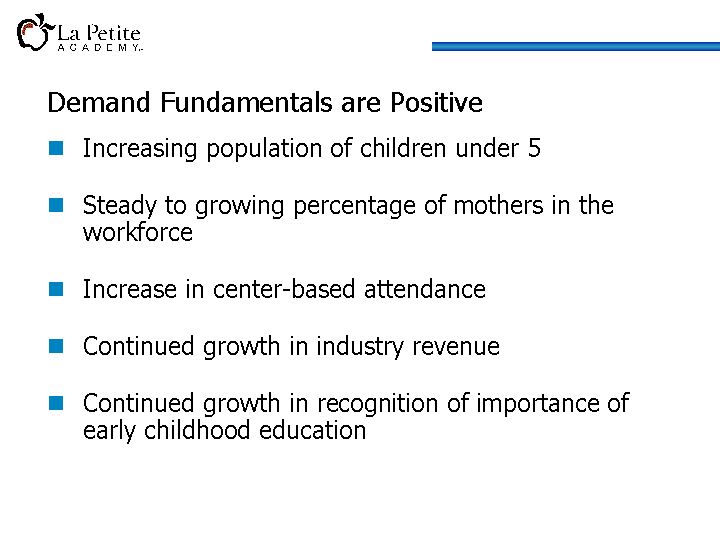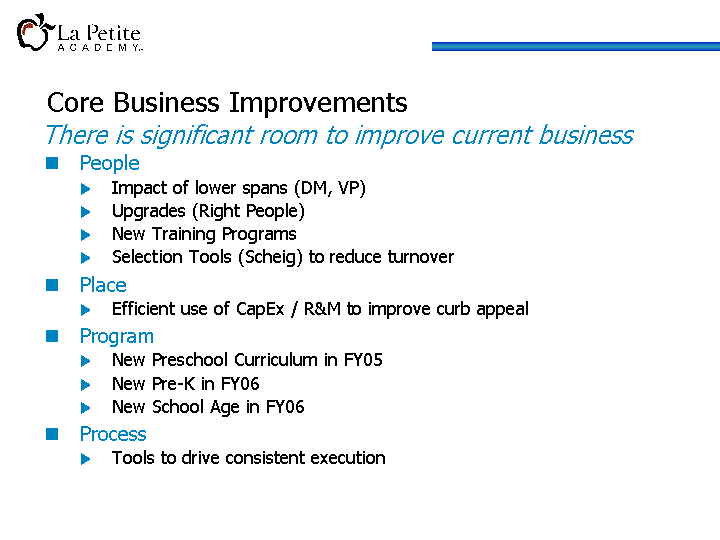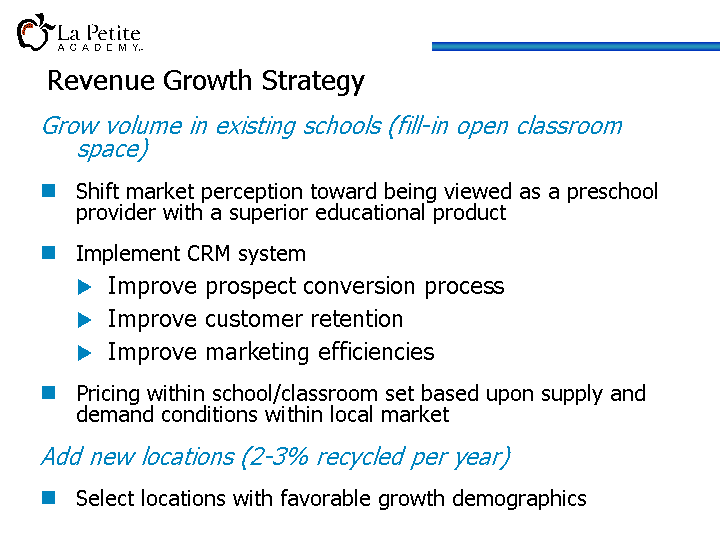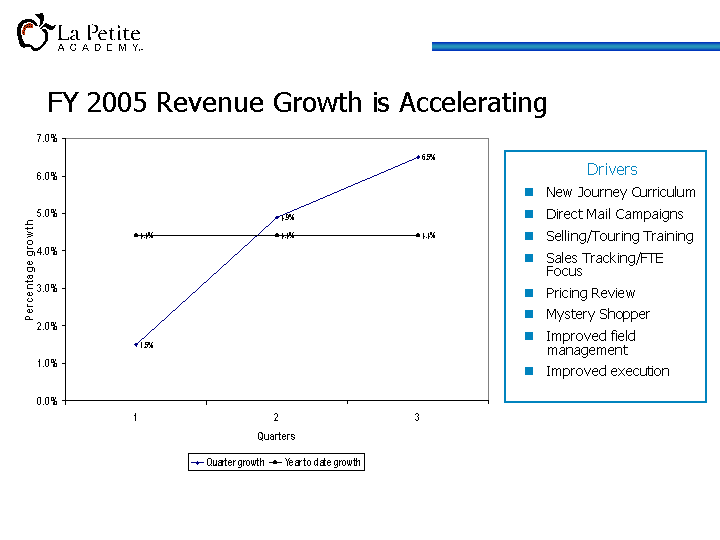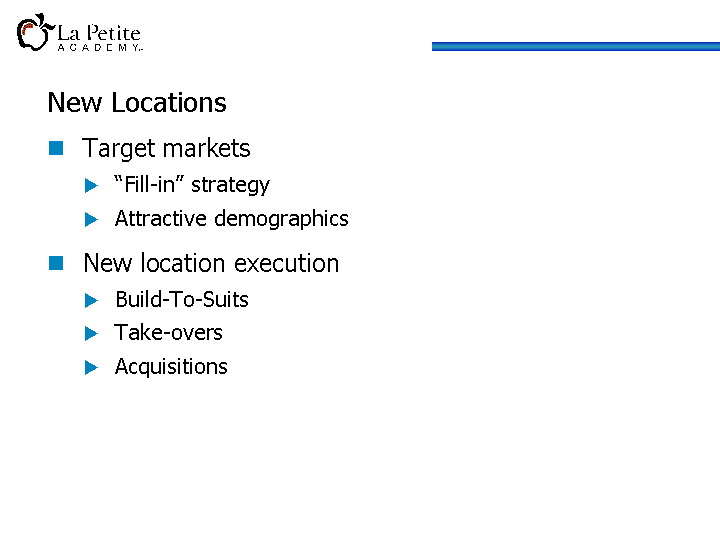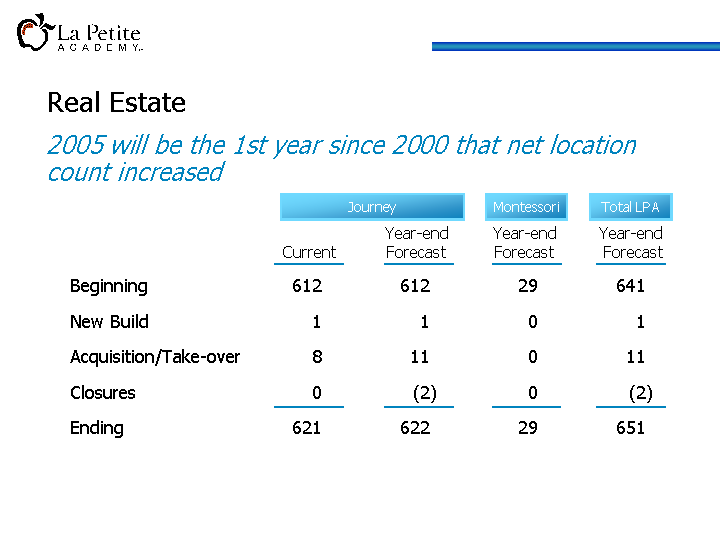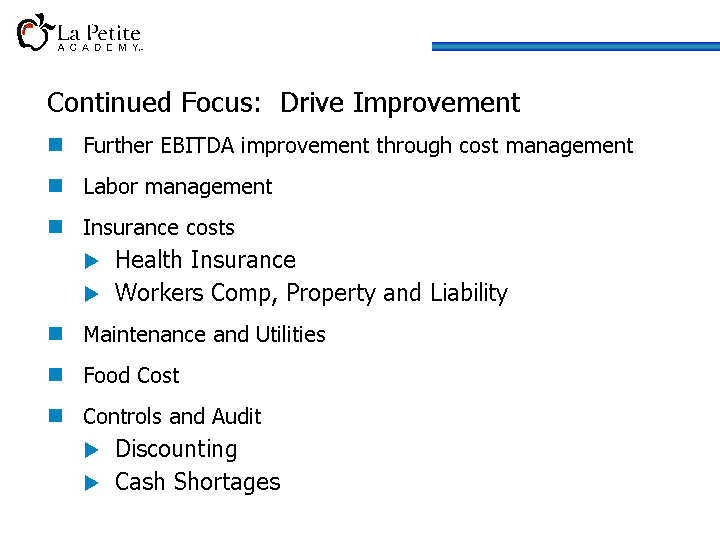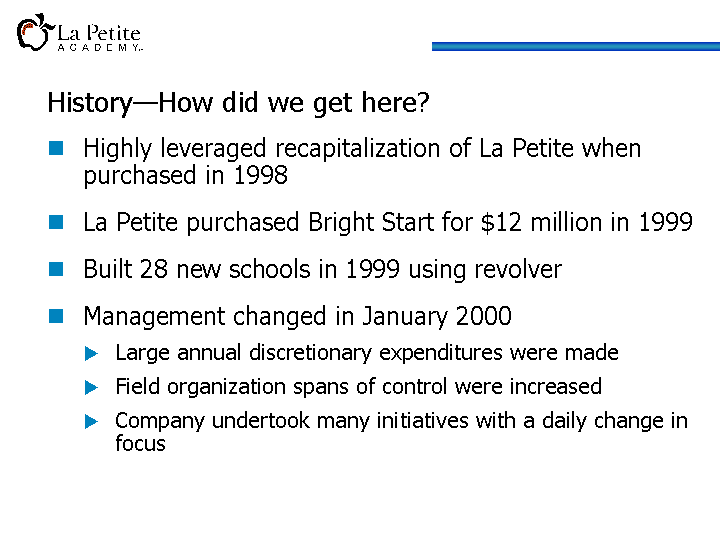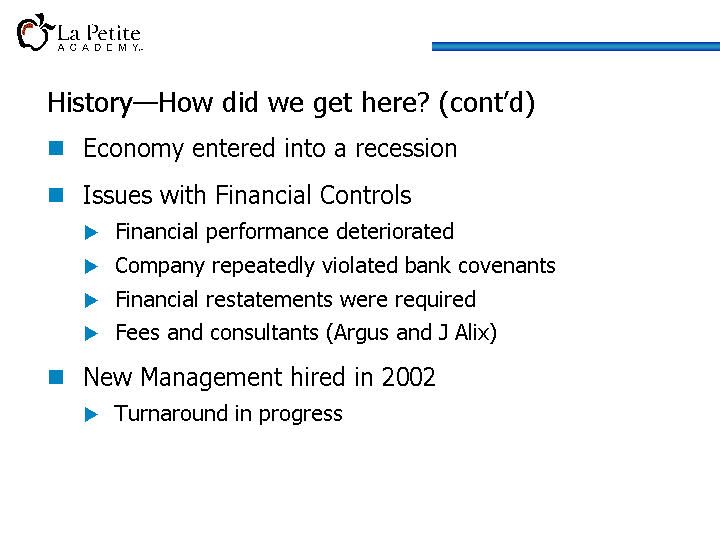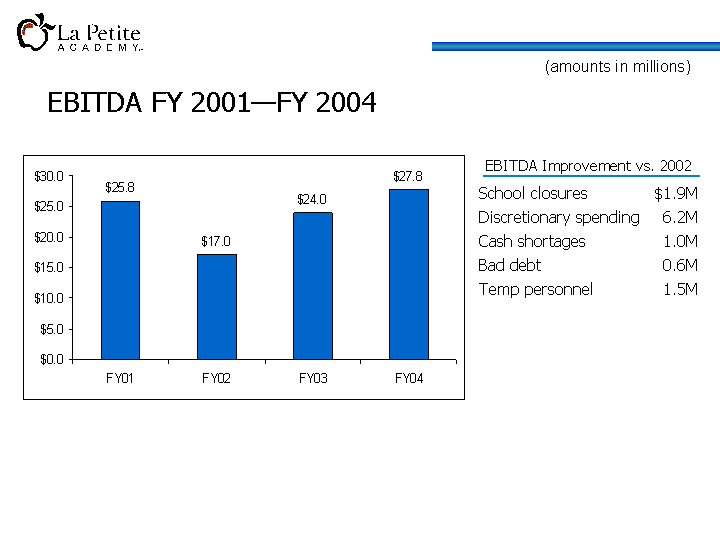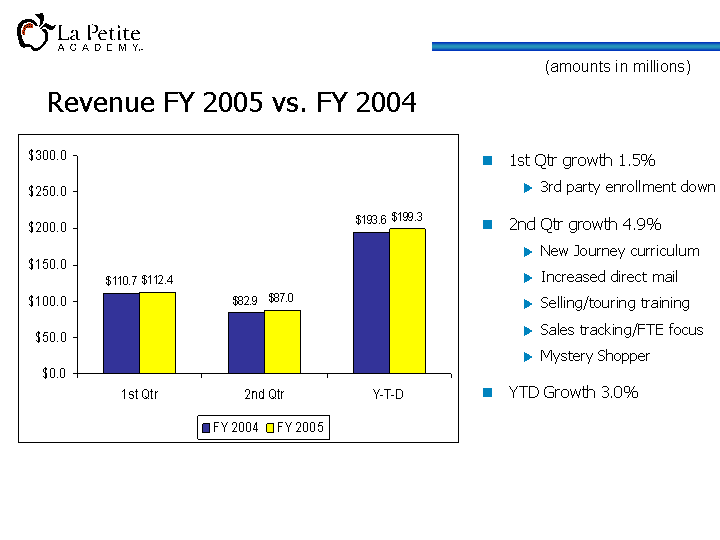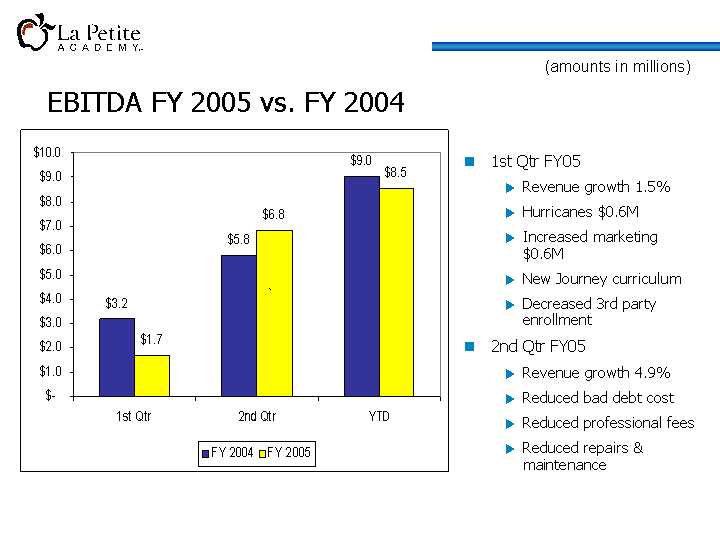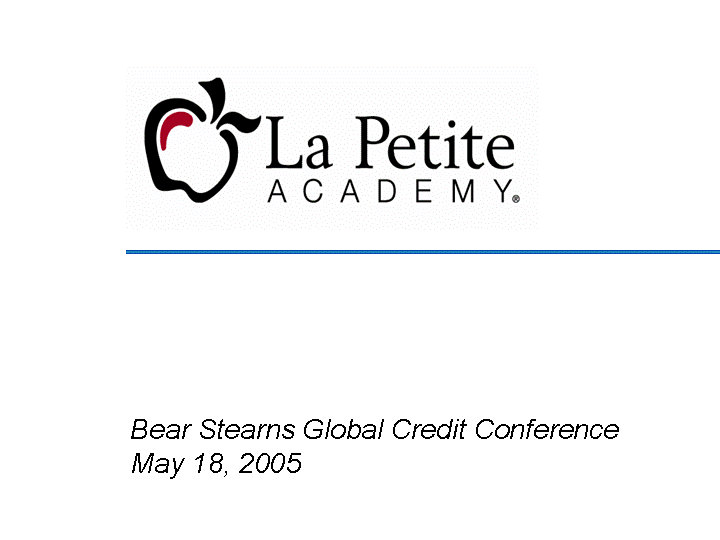Free signup for more
- Track your favorite companies
- Receive email alerts for new filings
- Personalized dashboard of news and more
- Access all data and search results
Filing tables
Filing exhibits
Related financial report
La Petite Academy similar filings
- 25 May 06 La Petite Academy, Inc. to Hold Conference Call Third Quarter Fiscal Year 2006 Financial Results
- 2 Mar 06 La Petite Academy, Inc. to Hold Conference Call Second Quarter Fiscal Year 2006 Financial Results
- 9 Dec 05 La Petite Academy, Inc. to Hold Conference Call First Quarter Fiscal Year 2006 Financial Results
- 18 May 05 Results of Operations and Financial Condition
- 18 Apr 05 Entry into a Material Definitive Agreement
- 3 Jul 03 Other events
- 4 Jun 03 Other events
Filing view
External links

